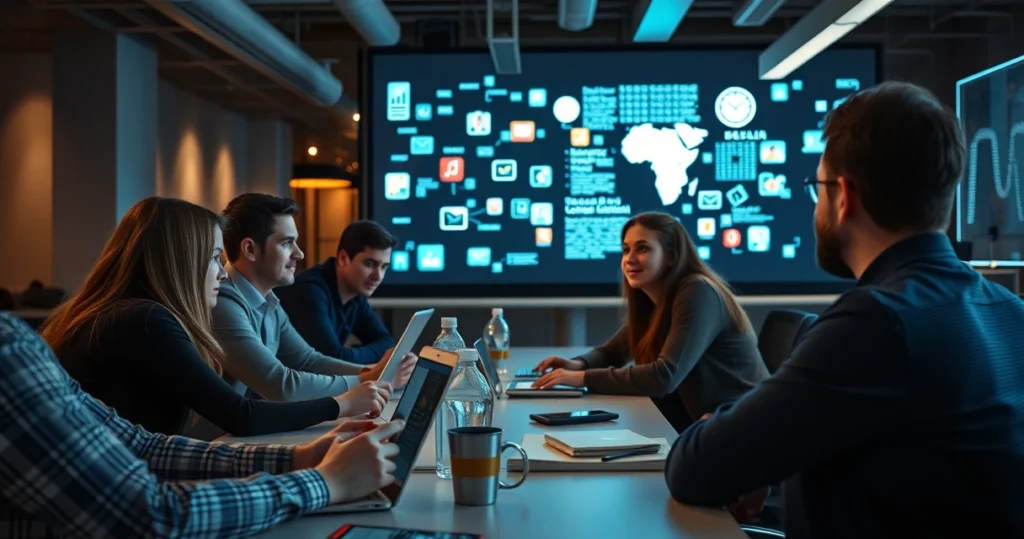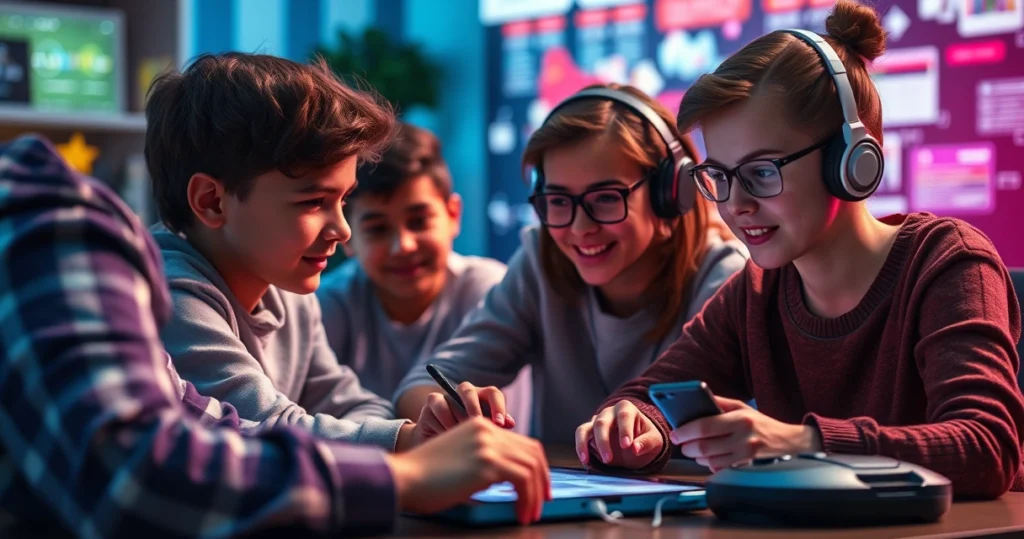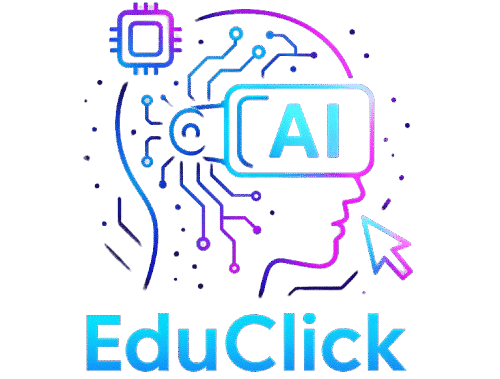# Virtual Reality Classrooms: A New Era of Immersive Learning Experiences
## Introduction
Imagine stepping into a classroom where you don’t just learn about the solar system from a textbook, but you actually float among the stars, exploring planets and asteroids up close. This isn’t a scene from a science fiction movie, but a reality within virtual reality (VR) classrooms. As an educator, student, or parent, you’ve likely pondered the future of education, especially in a world increasingly driven by technological advancements. Virtual reality classrooms are at the forefront of this evolution, offering immersive learning experiences that engage students like never before.
Think back to your own school days—hours spent in a traditional classroom, often struggling to maintain focus through lectures and textbooks. You might recall feeling disconnected from subjects that seemed abstract or irrelevant to your everyday life. In contrast, VR education technology transforms these abstract concepts into tangible experiences. Imagine the excitement and curiosity it can spark in a student who is no longer confined to the four walls of a classroom, but is instead experiencing history, science, and more in a fully immersive environment.
This transformation in learning isn’t just about making education more engaging; it’s about leveling the playing field. In many parts of the world, access to quality education is limited. VR classrooms bridge this gap by providing students everywhere with the same high-quality learning experiences, regardless of geographical constraints. You may find yourself wondering how these technologies work, what their benefits are, and how they might change the landscape of learning forever.
As we delve into this topic, you’ll discover the profound impact VR classrooms have on enhancing not only educational outcomes but also personal development. It’s an exciting journey, one that invites you to rethink and reimagine what education could look like in the near future. Prepare to explore how virtual reality is not just a tool for learning, but a catalyst for change—a new era of educational possibilities. Let’s step into this virtual world together.
## The Evolution of Education: From Traditional to Virtual Reality
### Traditional Classroom Limitations
Traditional classrooms, while foundational, often face several limitations:
– **Restricted Engagement**: Traditional methods may struggle to engage the digital-native generation.
– **Limited Resources**: Access to diverse and high-quality educational resources can be restricted by location.
– **Static Learning Environment**: Learning is often passive, with limited opportunity for dynamic, interactive experiences.
### The Rise of Digital Learning
Digital learning emerged as a response to these limitations:
– **Online Courses**: Platforms like Coursera and Khan Academy democratized education by offering online courses across various subjects.
– **Blended Learning Models**: These models combine online digital media with traditional face-to-face classroom methods.
– **Interactive Content**: Use of videos, quizzes, and interactive modules to enhance learning experiences.
### Introduction to Virtual Reality in Education
Virtual reality represents the next step in this digital learning evolution:
– **Immersive Experiences**: Students can explore environments and scenarios that are otherwise inaccessible.
– **Customizable Learning**: Lessons can be tailored to individual learning styles, improving comprehension and retention.
– **Collaboration in Virtual Environments**: Students engage in interactive, collaborative exercises in a shared virtual space.
## Benefits of Virtual Reality Classrooms
### Enhanced Engagement and Motivation
Virtual reality classrooms significantly boost student engagement:
– **Experiential Learning**: Students learn by doing, which enhances understanding and retention.
– **Interactive Environment**: These environments encourage active participation and critical thinking.
– **Motivation to Learn**: VR technology can reignite a passion for learning by making subjects more appealing.
### Safe and Controlled Learning Environment
VR provides a safe space for exploration and experimentation:
– **Risk-Free Simulations**: Students can undertake experiments and explore scenarios without real-world risks.
– **Controlled Variables**: Teachers can adjust scenarios in VR to highlight specific learning outcomes.
– **Feedback and Assessment**: Immediate feedback helps guide students in their learning journey.
### Overcoming Geographic and Economic Barriers
VR classrooms democratize education:
– **Remote Access**: Students from remote or underserved areas gain access to quality education.
– **Economic Efficiency**: Over time, the cost of VR technology can prove more economical than traditional resources.
– **Cultural Exposure**: Students can explore different cultures and histories first-hand, enriching their global understanding.
## Practical Applications of VR in the Classroom
### Science and STEM Education
VR is particularly transformative in STEM:
– **Virtual Laboratories**: Students conduct experiments in a virtual lab setting, enhancing practical skills.
– **Astronomy and Space Exploration**: Journey through the galaxy, learning about celestial bodies and cosmic events.
– **Medical Training**: Aspiring doctors practice surgeries in a safe, virtual environment.
### History and Social Studies
Bringing history to life:
– **Historical Reenactments**: Witness historical events firsthand, providing context and depth to lessons.
– **Cultural Immersions**: Visit ancient civilizations and cultures, fostering empathy and understanding.
– **Interactive Timelines**: Engage with dynamic timelines and maps, enhancing comprehension of historical events.
### Language and Communication
Language acquisition in VR:
– **Immersive Language Labs**: Practice languages in virtual settings that mimic real-world environments.
– **Cultural Exchanges**: Interact with native speakers or simulated characters to improve conversational skills.
– **Role-Playing Scenarios**: Engage in role-playing to practice language usage in different contexts.
## Challenges and Considerations in Implementing VR Education
### Technical and Infrastructure Requirements
Implementing VR in classrooms requires substantial infrastructure:
– **High Initial Costs**: VR equipment and software can be expensive.
– **Technical Support**: Schools need IT support for installation, maintenance, and troubleshooting.
– **Network Bandwidth**: High-speed internet is crucial for smooth VR experiences.
### Teacher Training and Curriculum Development
Teachers must adapt to new teaching methodologies:
– **Professional Development**: Training programs are necessary to equip teachers with VR teaching skills.
– **Curriculum Integration**: Lessons need to be redesigned to incorporate VR technology effectively.
– **Assessment Methods**: New methods for evaluation and assessment in VR settings need to be developed.
### Student Accessibility and Inclusivity
Ensuring VR is accessible to all students:
– **Adaptations for Disabilities**: VR must include features for students with disabilities.
– **Device Compatibility**: Ensuring compatibility with various devices to prevent exclusivity.
– **Equity in Access**: Addressing socio-economic disparities in access to VR technology.
## Future Prospects of VR Education Technology
### Innovations in VR Technology
The fut
🎥 Vídeo complementar sobre o tópico
ure of VR in education is promising:
– **Advanced Simulations**: More realistic and detailed simulations for deeper learning experiences.
– **AI Integration**: AI-driven VR experiences offering personalized learning paths.
– **Wearable Technology**: Development of more comfortable and affordable VR wearables.
### Expansion Across Educational Levels
VR will impact all levels of education:
– **K-12 Education**: Enriching standard curriculums with interactive VR modules.
– **Higher Education**: Providing university students with advanced simulations and research tools.
– **Vocational Training**: Offering hands-on experience in trades and professions through VR.
### Collaboration with Global Institutions
Global partnerships will enhance VR education:
– **International Programs**: Collaborate across borders to create diverse learning experiences.
– **Shared Resources**: Institutions pool resources to develop comprehensive VR content libraries.
– **Cross-Cultural Learning**: Facilitating global classrooms where students from different countries learn together.

## Frequently Asked Questions
### What is a virtual reality classroom?
A virtual reality classroom is an educational space where students use VR technology to engage in immersive learning experiences. It allows students to interact with 3D simulations and environments, making abstract concepts more tangible and learning more engaging. For instance, rather than reading about the Roman Empire, students can virtually explore ancient Rome.
### How do virtual reality classrooms benefit students?
Virtual reality classrooms provide numerous benefits, including enhanced engagement, improved retention of information, and personalized learning experiences. They allow students to explore subjects in a more interactive way, making learning enjoyable and memorable. For example, VR can turn a traditional biology lesson into a virtual field trip inside the human body.
### Are virtual reality classrooms applicable to all subjects?
Yes, virtual reality can be applied across a wide range of subjects. While it is particularly beneficial in STEM, it also enhances learning in history, language arts, and even physical education. For example, language students can practice speaking in a simulated foreign market, while history students can witness significant historical events as they unfolded.
### What challenges do schools face in implementing VR education?
Schools face several challenges, including high initial costs for equipment, the need for technical support, and the demand for teacher training. Additionally, developing a VR-compatible curriculum and ensuring equitable access among students are also significant hurdles. For instance, schools may need to secure funding or partnerships to make VR accessible to all students.
### How can teachers incorporate VR into their lesson plans?
Teachers can incorporate VR by aligning VR experiences with their curriculum objectives and using it as a tool to enhance specific lessons. For example, a geography teacher might use VR to take students on a virtual tour of the Amazon rainforest, complementing a unit on ecosystems.
### Is VR technology safe for students to use?
When used responsibly, VR technology is safe for students. It is essential to monitor usage time, ensure proper equipment handling, and provide breaks to prevent eye strain or motion sickness. Schools should follow recommended guidelines for VR use to maintain students’ health and well-being.
### What kind of VR equipment is needed for a classroom?
Classrooms need VR headsets, compatible computers or devices, and software that aligns with educational goals. Some setups might include additional accessories like motion controllers or cameras. The choice of equipment often depends on the school’s budget and the specific needs of the curriculum.
### Will VR classrooms replace traditional teaching methods?
While VR classrooms offer unique advantages, they are not expected to replace traditional teaching methods entirely. Instead, they complement and enhance existing methods by providing an additional layer of interactivity and engagement. For instance, VR can be used as a supplementary tool to reinforce concepts taught through lectures and textbooks.
### How accessible is VR education for students with disabilities?
VR education is increasingly becoming accessible to students with disabilities through adaptive technologies and inclusive design. Features such as voice commands, adjustable settings, and tactile feedback can help accommodate various needs. Schools should select VR platforms that prioritize inclusivity and accessibility.
### How does VR prepare students for the future workforce?
VR prepares students for the future workforce by developing critical thinking, problem-solving, and technical skills. It provides hands-on experience with cutting-edge technology, fostering adaptability and innovation. For instance, VR simulations can train students in fields like engineering, healthcare, and architecture, providing real-world skills in a virtual setting.
## Conclusion
As we stand at the cusp of a new era in education, virtual reality classrooms promise to transform how students learn and interact with the world around them. This innovative approach to learning not only captivates and engages but also ensures that education is accessible, inclusive, and tailored to the needs of every learner. By breaking down the barriers of traditional education, VR classrooms offer a glimpse into the future of education, where learning is an adventure rather than a chore.
You are invited to embrace this change and explore the possibilities that VR education technology brings. Whether you’re an educator looking to inspire, a student eager to explore, or a parent seeking the best opportunities for your child, VR classrooms offer a wealth of potential. The journey to a fully immersive education experience is just beginning, and your involvement can shape its trajectory—helping to create an educational environment that is as dynamic and diverse as the world we live in.
The future of education is bright, filled with immersive learning experiences that expand minds and open doors. Take the first step towards this future by advocating for VR technology in education, participating in discussions, and staying informed about the latest advancements. Together, we can ensure that the next generation of learners is not only prepared for the challenges ahead but is also inspired to innovate and lead.
## Key Takeaways
– **Engagement Revolution**: VR classrooms drastically improve student engagement and motivation through immersive, experiential learning.
– **Global Accessibility**: Virtual reality bridges educational gaps, making quality learning opportunities accessible to all, regardless of location.
– **Comprehensive Applications**: VR is applicable to a wide array of subjects, enhancing traditional curriculums with interactive, realistic simulations.
– **Inclusivity and Adaptation**: While challenges exist, VR technology is becoming more inclusive, offering features that accommodate diverse learner needs.
– **Future Workforce Preparation**: Exposure to VR technology equips students with essential skills, preparing them for a dynamic and evolving job market.
– **Collaborative Learning**: VR fosters a collaborative learning environment where students can engage with peers worldwide, enriching their educational experience.
By understanding and embracing these key aspects, you can actively participate in the ongoing transformation of education and support the integration of virtual reality in classrooms worldwide.




